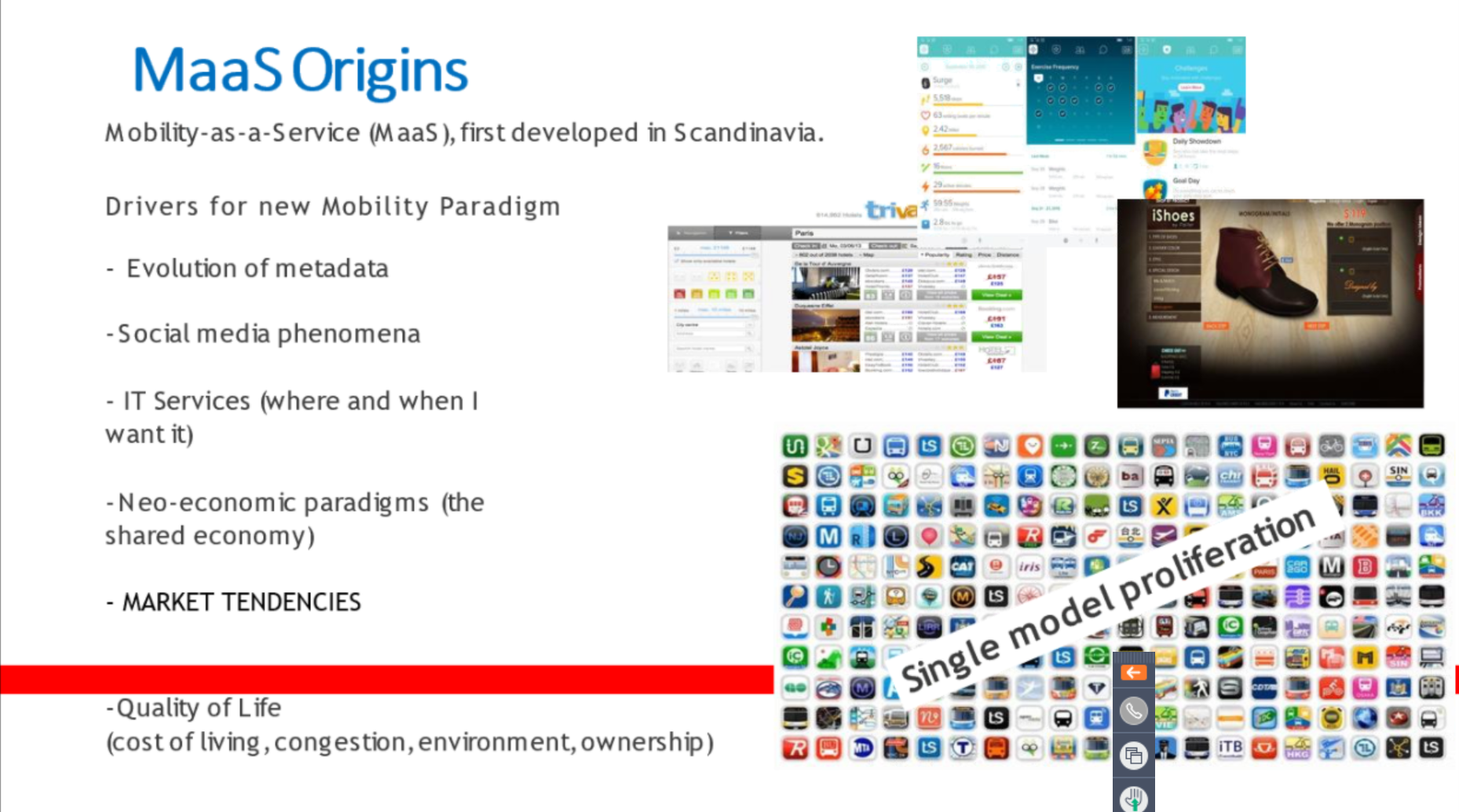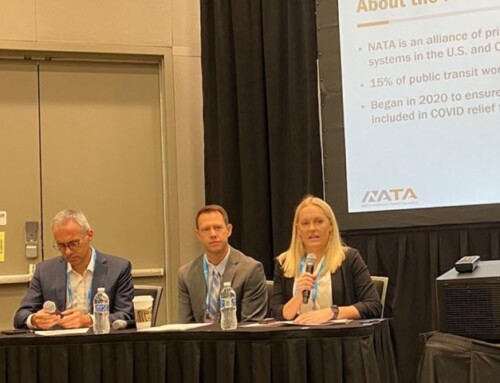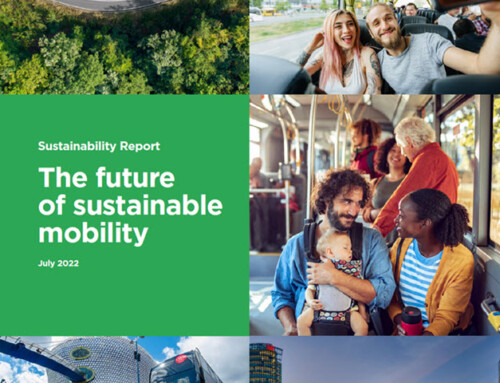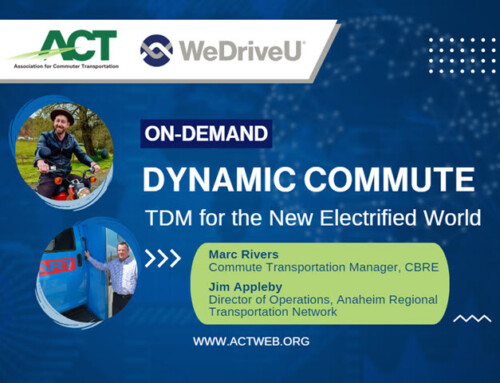MaaS Class: Evolution of Mobility as a Service

We attended this week’s ACT webinar on Mobility as a Service (or “MaaS”), a topic we’re often asked about. Here are some highlights.
What is Mobility as a Service?
For attendees who were new to “MaaS,” ACT defined it as: “a new concept of integrating various forms of transportation services (public transit, ride sharing, car sharing, bicycling, and walking) into a single system accessible on demand, matching the user with the most efficient and affordable option for their desired trip and encouraging the user to take action to adopt these options.”
So it simply ties together services you already know and use.
Trends
Speakers Danny Silva from METRO STAR and Brenda Bustillos from Texas DOT discussed how MaaS is evolving. Here are some highlights from WeDriveU Customer Success Manager David Zyck:
Metadata: A key factor in the rise of MaaS, says Danny, is the evolution of metadata (see image below). Similar to travel web sites collecting user data, transportation organizations can now collect and analyze rider data faster and in significantly greater amounts. It’s becoming easier to understand the success of transportation policies.
Vision: Danny also described how the MaaS vision is to move away from siloed, static service to personalized solutions from unified back-end systems. Open source APIs enable riders to plot their journey from one access point including synchronized payments. The user experience is transitioning from fixed route service to on-demand and door-to-door service instead.
Use Case: Brenda oversees Houston Connect Smart, a MaaS platform to manage congestion. She described how the program provides transportation stakeholders with data to improve their operational efficiency with the goal to encourage multi-modal transportation based on data-driven rider recommendations. The impact is still developing, and it will be interesting to see whether if it reduces vehicle miles traveled (VMT).
We asked David for a preview of what’s to come.
“Real-time data analytics enable WeDriveU to optimize operational efficiency and provide new insights to our customers,” said David. “We’re bringing together key data sources including GPS tracking, fleet management, fuel consumption, and maintenance to realize these goals.”
WeDriveU’s Bottom Line: As an ACT member that’s committed to partnering with MaaS providers, it’s an exciting space for clients to watch. Like to discuss this further? Reach out to David.
Special thanks to the Association for Commuter Transportation (ACT), Danny and Brenda for shedding new light on the trends.
Access ACT’s replay of “MaaS Up America! Mobility as a Service Implementation Review and Operation: Creating the Right User Oriented Multi-Modal Mobility Ecosystem.” Find Danny’s slides on ACT’s webinar page.






